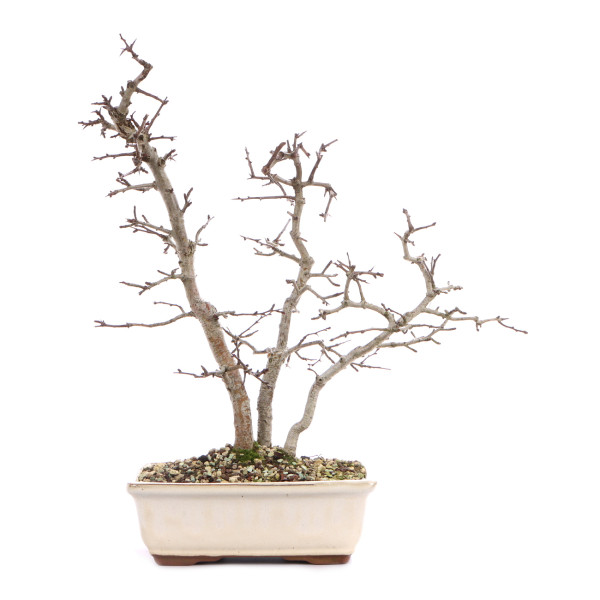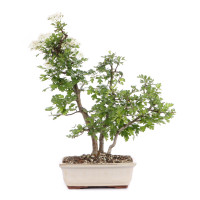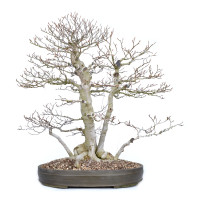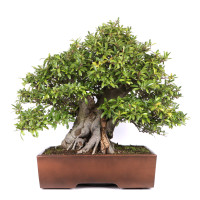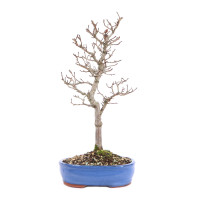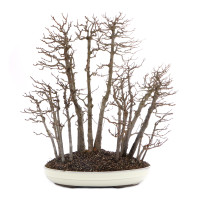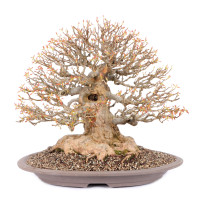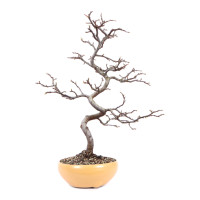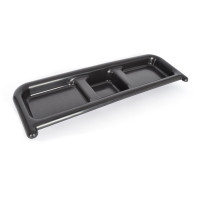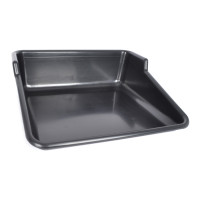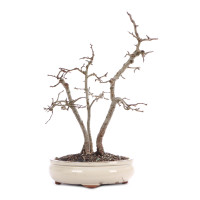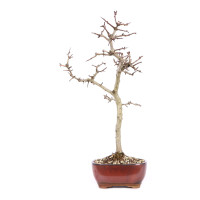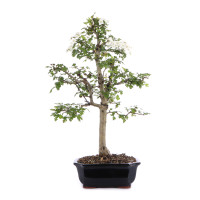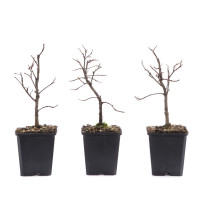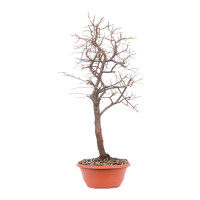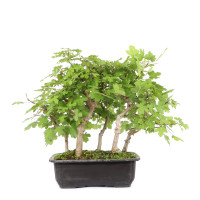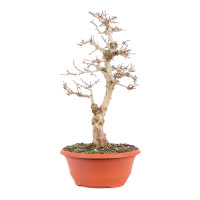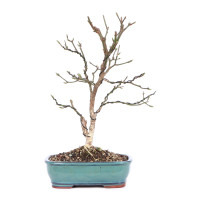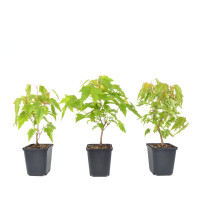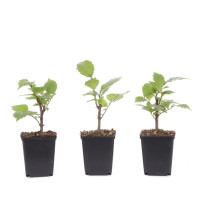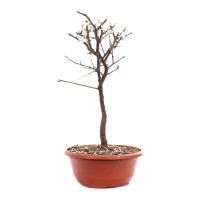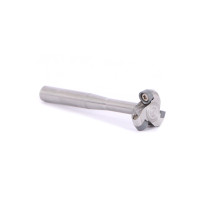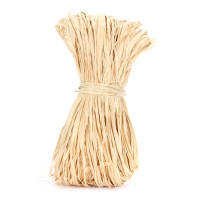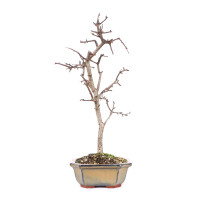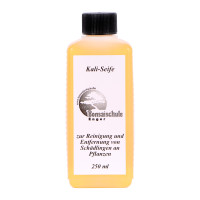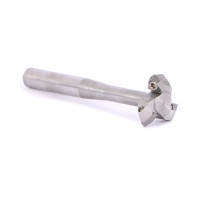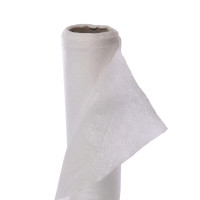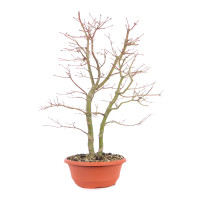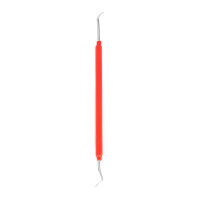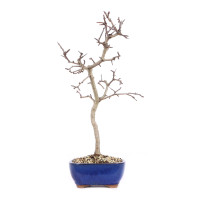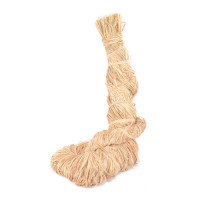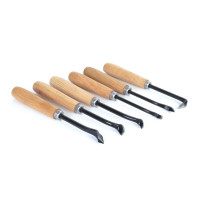- Order number: 1010-KG-24-0164
- Addtion: 3 trees
- Height: 45 cm (incl. pot)
- Foliage: deciduous
- Bonsai Pot: ceramic pot
- Age: ca. 19 years
- Forms of design: forest shape (Yose-ue)
- Characteristics: with flowers, with fruits
- Origin: Germany
Crataegus monogyna - Common Hawthorn
General:
The common hawthorn is native to Europe. It grows on the edges of the forest, in hedges and sparse forests as a sparse, but often densely branched, large shrub up to 10 meters high. On the thorny shoots there are 1 - 3-lobed, deeply incised, glossy dark green leaves. These turn yellow to yellow-orange in autumn. The plant blooms white in May. The small flowers stand together in clusters and also form small, scarlet fruits. The hawthorn tolerates sun and partial shade and prefers not too nutrient-poor and light soils. The species is also very frost hardy and tolerates pruning.
Care as a bonsai:
The hawthorn is very suitable for bonsai cultivation. The plant tolerates pruning very well and reacts with the formation of many new buds or shoots. Even a strong pruning and “sticking on the stick” is not a problem with a hawthorn. The deeply incised, lobed leaves are nice and small and give the plant a delicate character. A special ornament are the many densely packed flowers and the fruits, which later turn into an intense red color. Last but not least, the hawthorn has a very beautiful, smooth, silvery shiny bark when it is young, which becomes barky with age and then flakes off. The fresh shoots are only cut back after flowering. The shape cutting and the wiring can be done in summer without hesitation. However, the wire should not grow in. A sunny location outdoors promotes pronounced autumn colors and healthy growth. However, you should pay attention to sufficient watering during the summer. Drought quickly leads to leaf fall. Normal protection is sufficient in winter. Any powdery mildew that may occur can be treated with commercially available spray agents. Prophylactic treatment may be recommended.

